Starting in March 2020, tens of millions of people—probably hundreds of millions (I lose track of numbers after we get into the millions)—started suddenly working from home. Routines were upended, apartments became overcrowded, and a lot of people struggled to get any work done.
As someone who always works from home (in a one-bedroom apartment I share with my partner, who also started working from home in March 2020), I thought I could share some tips for working from home and how to stay productive, focused, and sane.
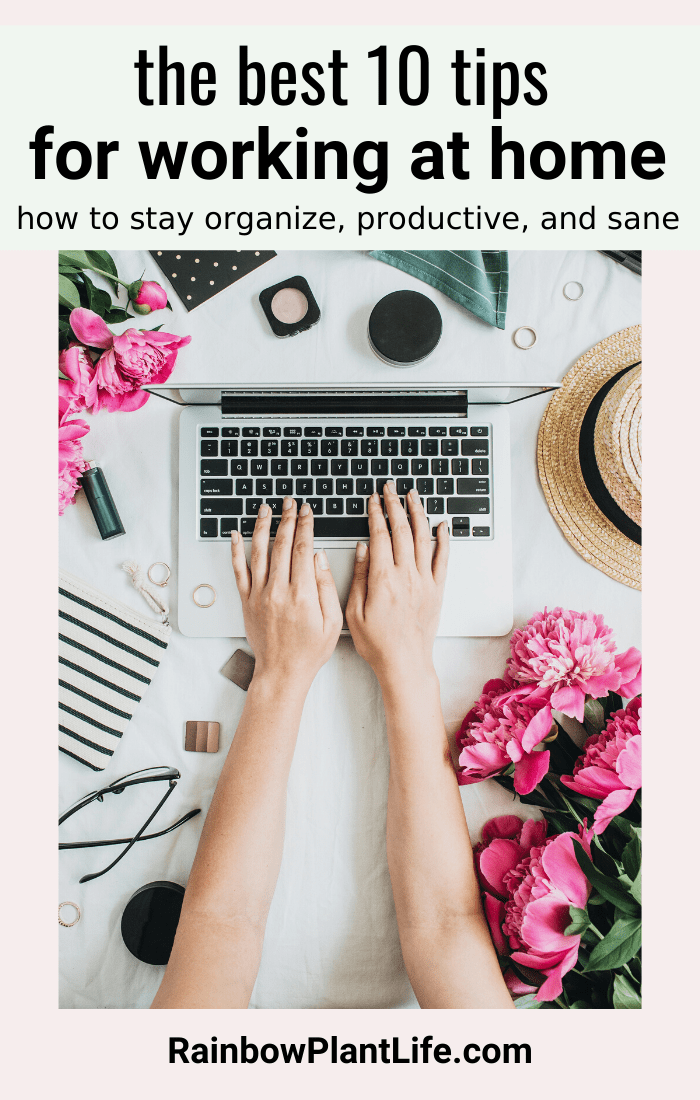
1. Start and end your day with rituals
When I started working from home last year, I didn’t know when or how to start my workday. It was easy when I used to work in an office because the mere act of arriving in the office and dropping my stuff off at my desk signaled the start of my workday.
But when you wake up in your scrubby pajamas and can start your workday at any time you choose, you need more cues to signal your brain that it’s time to start the workday. That’s why I recommend developing a ritual that you perform at the start of each workday. And no, this ritual doesn’t have to involve you changing out of your pajamas (though I find it quite helpful to do that).
Since a large chunk of my work is creative and involves me cooking, taking photos, filming videos, etc., my workday rituals vary. But on days where I know I’m going to start my work at my desk, using my computer, I have a set workday startup ritual.
I clear off my desk of any clutter, brew a cup of tea, light a candle or an essential oil aromatherapy diffuser, and turn on some instrumental music. These rituals are cues that signal to my brain “it’s time to get into the flow of deep, focused work.”
I pick these specific rituals—brewing tea, lighting a candle, turning on relaxing music—because I find them to be enjoyable and relaxing. And doing something good for myself gives me the motivation to start working, even if it’s on a task I don’t really want to do.
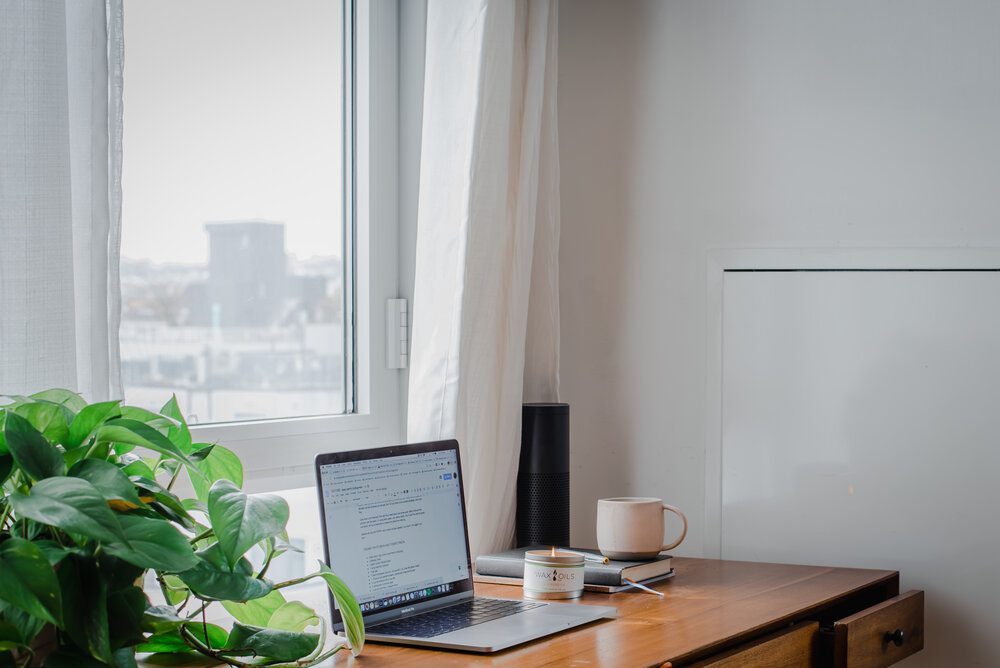
Pick a ritual or set of rituals that you enjoy or that will set the mood for the workday. It could be enjoying a cup of coffee with your partner for 15 minutes, starting with a quick workout or a meditation, or writing in your journal. Repeat this ritual each day before starting your workday until it becomes an ingrained habit. After a few weeks, your brain will automatically become accustomed to starting the workday once you’ve completed these rituals.
Relatedly, it is also helpful to have an end-of-day workday ritual to more clearly demarcate when work ends and when play begins. My end-of-workday ritual is to review what I accomplished that day and to start planning the following day’s work. I like to have a general sense of the next workday will look like. I often do this with a glass of wine, which makes the ritual all the more enjoyable.
I got the idea of an end-of-workday ritual from the Full Focus Planner, the daily/weekly/monthly/quarterly planning tool I started using this year. It is definitely the most useful tool I’ve used to organize my work, and in just a few months, I have noticed myself working smarter and working more towards my big-picture goals than I ordinarily do.
At the beginning of the journal, there are lots of big-picture-focused pages, including one where you can write your ideal start-of-workday and end-of-workday rituals. And on each daily page, there’s space to mark whether you’ve completed those rituals.
If you want to feel more organized, more in control of your work, and work smarter towards reaching your goals, I highly recommend the Full Focus Planner! This is an affiliate link, so if you do purchase a planner through this link, I get a small commission, which helps me continue to offer all the free content I share with you all :) And you can get $5 off any planner of your choice using the code NISHA5.
2. Develop a mindfulness practice around your work
Working from home can be very distracting. We have lots of things at our disposal that we typically don’t have in our formal workplaces (unlimited snacks, I’m looking at you). And, especially during this unprecedented time, everything feels distracting. There’s an endless news cycle we to keep up with, new health guidelines to learn about, family and friends to check in with, groceries and supplies to frantically order online (please stop hoarding toilet paper!), hyper kids running around the house, and the list goes on.
That’s why I recommend developing a mindfulness practice around your work.
Mindfulness means focusing your awareness on the present moment, while acknowledging and calmly accepting that you might be having or experiencing other thoughts, feelings, and sensations at the time.
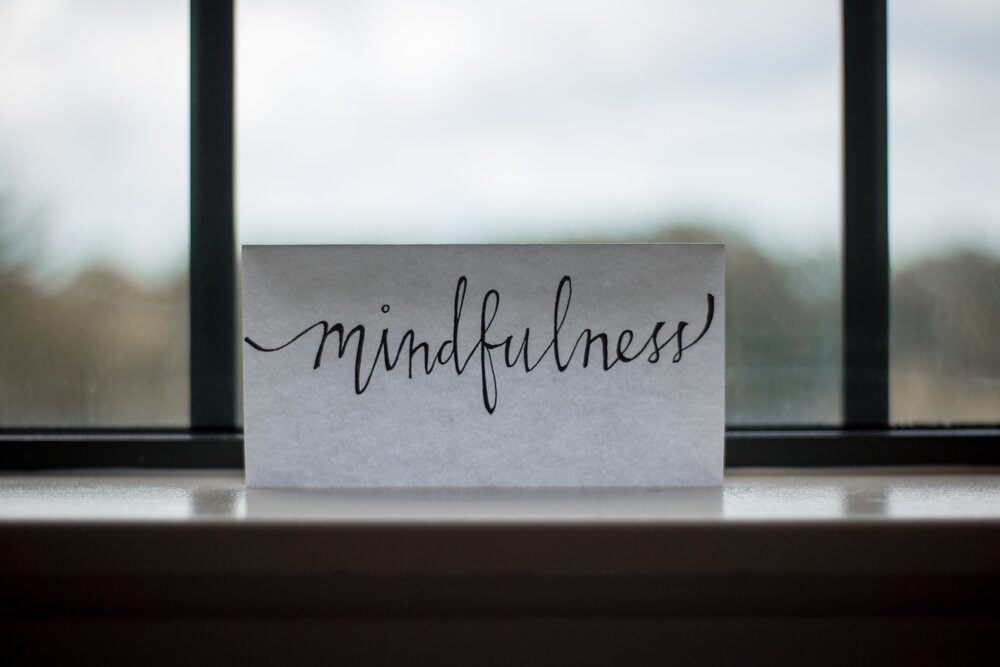
When it comes to mindfulness in work, it means focusing your awareness and attention on the present task, whether it’s drafting a memo or participating in a conference call. It also means recognizing and then calmly releasing distractions as they arise, whether those distractions are internal (thoughts, feelings) or external (text messages, other people, etc.).
One way to bring more mindfulness to your work is to break up with your multitasking habit. Despite countless studies conclusively proving that effective multitasking is just an illusion, many of us like to think that we’re the superhuman exception to the rule. Just because Steve in Marketing can’t seem to respond to emails while leading a meeting, it doesn’t mean I can’t.
No, but it really does mean just that. The human brain is complex and wonderful, but it’s simply not able to truly work on multiple things at the same time. And when we attempt to “multitask”, we get less done and miss important information along the way. For instance, if you’re on the phone with Steve in Marketing but also responding to emails at the same time, your visual cortex becomes less active and responsive, meaning you’ll absorb less of what you’re seeing in your inbox (and also less of what poor Steve is saying).
Developing a mindfulness practice around your work-from-home routine is so critical that it encompasses many of the other tips, including this next one.
3. Distance yourself from your inbox
While we’re all (hopefully) practicing socially distancing, you could also practice distancing yourself from your inbox. I know that email is a critical form of communication in the modern workplace, and especially now since we can’t communicate in person, so I’m not suggesting you stop checking email altogether (though, if I’m being perfectly honest, email is obsolete in my dream future world).
Instead, my suggestion is to be more intentional and, ahem, more mindful about how often and how you check your email. When I used to work in an office (both as a lawyer and then at a food/tech startup), I would often have my inbox (Outlook, Gmail, etc.) perpetually open in my desktop. Every time a new email popped up, I would see it. Or, at the very least, I would see new emails every 15 minutes.
Mind you, I wasn’t working in an environment where someone’s life depended on me checking email constantly. And I suspect most of us aren’t either. Of course, if you happen to be a traffic controller or a physician working remotely and urgent messages are being communicated via email, then this tip doesn’t really apply to you. But for most of us ordinary workers, everything will be okay if we don’t check our inboxes 10 times an hour.
I recommend carving out a few times during the day to check your email. The number of times will vary a bit based on your profession and workplace, but personally, checking email 2 to 3 times a day is ideal for me. And limiting yourself to a few email check-ins per day has two primary benefits.
One, when you don’t check email constantly, you’re able to get more work done because you’re working in a steady, consistent flow without constant interruptions and distractions. And two, you’re able to be more deliberate and thoughtful about responding to emails, which benefits both you and the other parties you’re emailing.
When I used to constantly check email, I’d often read emails as soon as I saw them, but then not do anything about them. Which resulted in countless followup emails that started with “Just checking in to see if you got my earlier email….” Of course, I got your earlier email. That’s how email works.
These days, however, when I limit myself to checking my inbox just 2 to 3 times a day, I am typically more action-oriented and efficient in dealing with email. I carve out a certain amount of time and usually brew myself a cup of tea or prepare a snack, turn on some music or a podcast that doesn’t require too much mental focus to pay attention to, and I race through my inbox with as fast as possible.
During my deliberate email check-ins, I immediately respond to emails that need responding. If an email doesn’t require a response from me, I archive it in an appropriately themed folder. If an email requires my action but not immediately or requires some additional work that I can’t do quite yet, I archive it in my “Action” folder. If an email requires action from someone else or I’m waiting on information from someone else, I archive it in my “Waiting For” folder.
I promise that if you start limiting yourself to a few deliberate email check-ins per day, you will be more organized, productive, and efficient with the rest of your work.
4. Turn off phone notifications (or hide your phone entirely)
This isn’t news to anyone, but we are addicted to our cell phones. And if you have notifications turned on—whether those alerts are for the Gram, Gmail, the NY Times, or how many candies you’ve crushed—it is virtually impossible to not look at your phone when it lights up with a new notification. It’s essentially a new hit of dopamine for a drug-addicted brain.
Similar to my suggestion for distancing yourself from your inbox, I also recommend distancing yourself from your phone, at least during certain hours, if you want to effectively work from home.
The easiest and least aggressive method is to turn off all phone notifications, except for phone calls, since those tend to be reserved for more important matters these days. You can even turn off notifications for text messages by turning on the “Do Not Disturb” mode.
If turning off phone notifications is not sufficient for you to stay focused, put your phone in another room for certain hours. Think about how many times you’ve mindlessly checked Instagram while a webpage loaded slowly, or how many times you scanned through your email while waiting your turn to speak on a conference call. You’re so much less likely to engage in these distracting behaviors if your phone is in another room. You can even place your phone in a drawer or cabinet during certain work hours to signal to your brain that your phone is off limits during this time.
And if you need to be even more aggressive, place your phone in a locked drawer or cabinet. Don’t throw away the key or anything, but I promise you will be less distracted and more focused if you do this. I did this many years ago as a weeklong experiment, and I was flabbergasted by how much I got done.
The most effective way to ensure that you really don’t check your phone is to get yourself a timed self- locking device like this. You set the timer (up to 24 hours) for how long you want the storage box to be locked, and it’s impossible to open it up during this time (unless you want to break the container). It could be as little as 30 minutes if you need to get through responding to
emails but find yourself too distracted, or as long as the entire workday if you’re on a tight deadline for a major project.
In all honesty, I don’t use this lockbox for my cell phone, but I do use it to store chocolate. Because I am a true chocolate addict who will otherwise eat chocolate at 9 am. Now, with this trusty lockbox, I wait until 5 pm to eat my chocolate like a normal civilized human being.
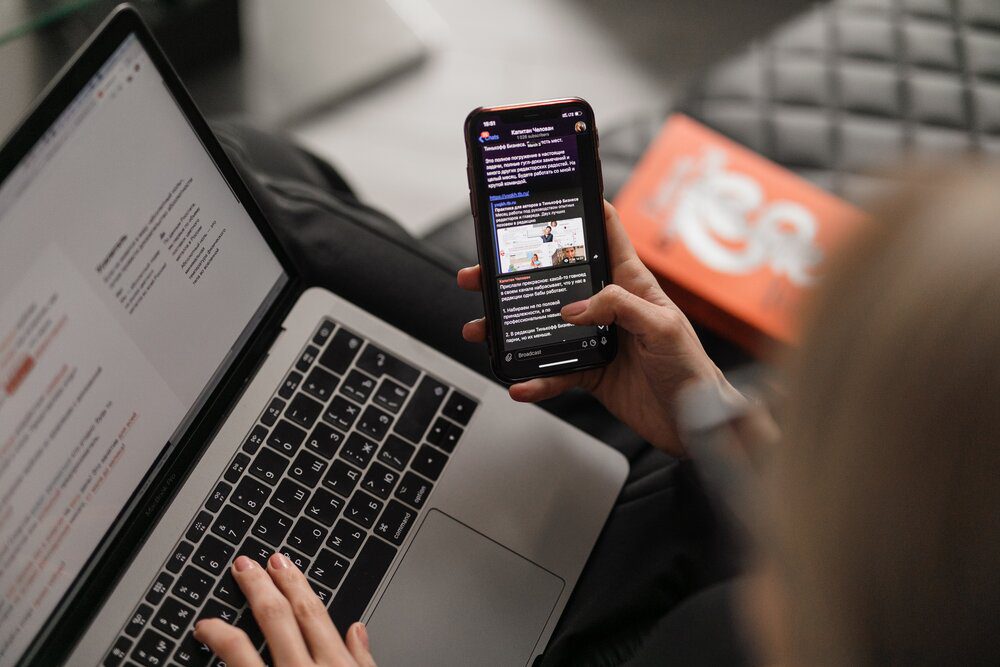
5. Use an app/website to limit other apps/website
Okay, I know I’ve railed on technology during the last three tips, but technology can also be a great aid in staying focused while working from home. There are several websites and apps you can use to limit your use of the most problematic websites and apps (e.g., email, facebook, instagram, etc.).
The Freedom App, for instance, blocks websites and apps during certain hours of the day (you choose the hours). So, if you know that you usually check ESPN at 11 am when you should be working or Facebook at 2 pm when you should also be working, you can set up the app to block those websites during those hours (or until the end of your workday).
6. Take breaks and make them intentional
These first few tips do require some discipline, but before you think I’m a drill sergeant, I want to emphasize that it’s important to take breaks from work, even when you’re working at home when you might think “do I really need a break when I’m wearing last night’s pajamas and eating snacks all day long?””
Study after study has shown that taking breaks from work, far from being a waste of time, actually enhances productivity. Which means that, while it’s helpful to lock up your phone or turn off all notifications, you don’t have to engage in that restrictive behavior all day long.
You can and should take breaks throughout the workday, but try to make those breaks as intentional as possible. Respect those breaks, just as you respect the time you’ve allotted to getting work done. Use your breaks to do something relaxing or enjoyable.
For instance, if you have a spreadsheet you need to fill out before an 11 a.m. call, and you know it’ll take 45 minutes to complete it, set aside 10:00 – 10:45 am to work on that spreadsheet without interruption (phone notifications off or phone stored elsewhere, inbox closed, etc.). But when that spreadsheet is done at 10:45 a.m., take a 15 minute break. You earned it and you should enjoy it. Didn’t finish the spreadsheet by 10:45? Still take that break.
What you do on that break is personal and depends on what you find enjoyable. Maybe it involves retrieving your phone and checking what your fave celebs are doing on Instagram, but maybe it’s brewing a nice cup of coffee or tea. Or spending some quality time with your spouse or partner. Maybe it’s doing some light stretching or churning out 50 pushups .
When you grant yourself breaks and make them meaningful, it gives you more motivation and enthusiasm to stay focused during the times you should be working.

7. Try the Pomodoro method
Speaking of taking breaks, if you’re not sure how or when or how often to take breaks vis-a-vis your actual work, I recommend trying out the Pomodoro method. Here’s the basic method.
-
Pick a task that you need to get done. It can be a big or small task, but it should be a task that requires your undivided attention.
-
Set a timer for 25 minutes and devote your undivided attention to this task during this short period of time. No checking emails, phones, or even talking to your family members at home.
-
When the timer is up, stop working and take a 5-minute break. Get up and use bathroom, text your friends back, make yourself another cup of tea or a grab a quick snack. Or do something relaxing like stretching or meditating.
-
After the 5-minute break, set the timer and start another 25-minute pomodoro. Repeat the process. After 4 pomodoros, take a longer break, for 20-30 minutes. Maybe that’s when you eat lunch, hang out with your partner or kids, or even squeeze in a catnap or quick workout.
Of course, you can just use the timer on your phone or computer (or ask your Alexa or Google Home to set the timer), but there are plenty of pomodoro timer apps should you want a bit more structure.
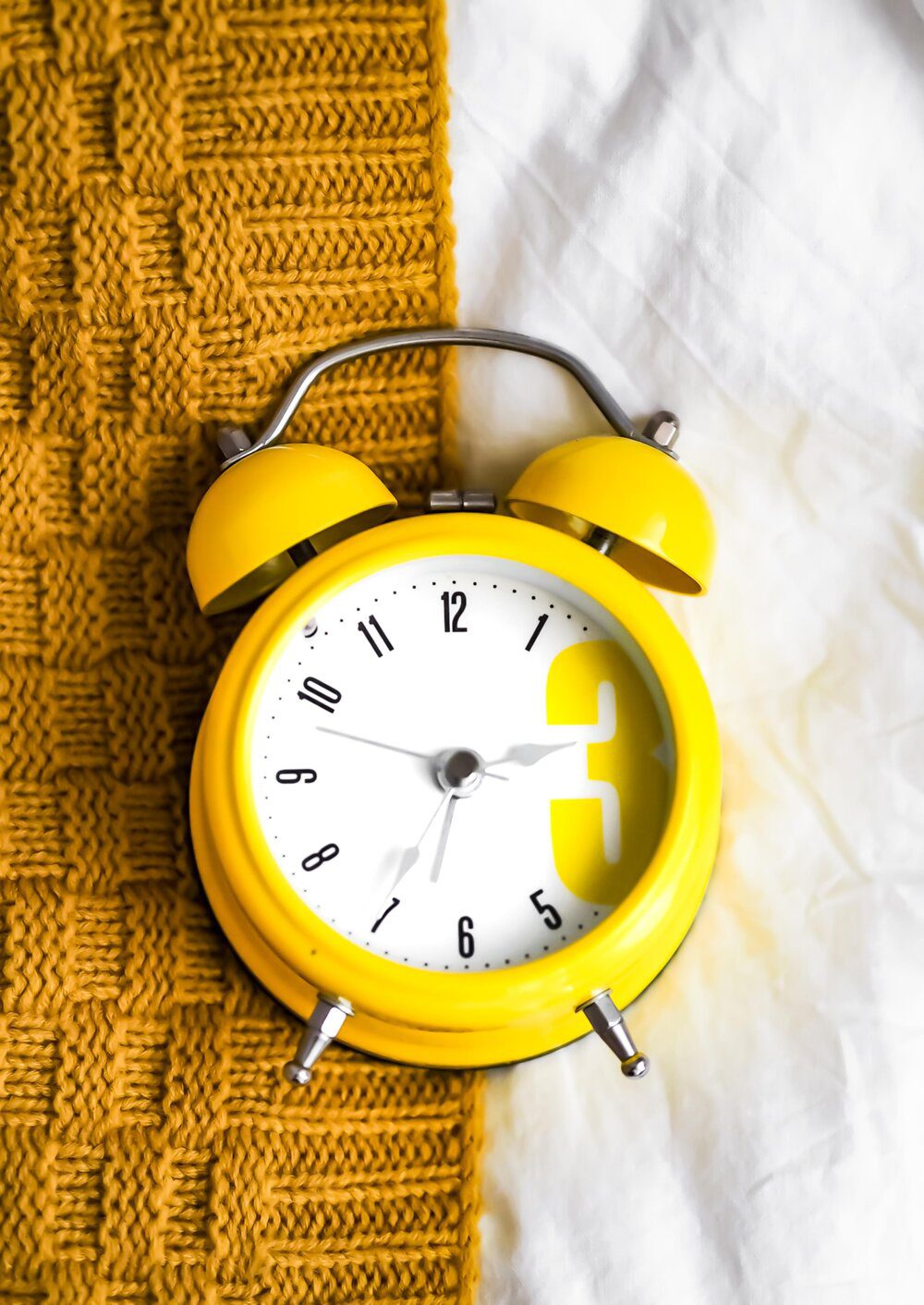
8. Carve out distinct work spaces and play spaces
If you’ve taken to responding to emails in bed or have set up your workspace on your couch, it’s time to rejigger your workspace. Whether you live in a 4,000 square foot house or a 500 square foot apartment (hey, fellow NYC’ers!), it’s critical to designate work-specific spaces in your home, spaces that are distinct from parts of the home that are used for play, leisure, and family time.
If you live in a small space like me, there might not be a ton of physical space between, say, your couch and your makeshift desk, but just knowing that each space is reserved for a particular function (work vs. play) is useful for the brain. Maybe that means that your dining table is reserved exclusively for family uses and meals, but three feet away sits your desk, and that is reserved exclusively for working.
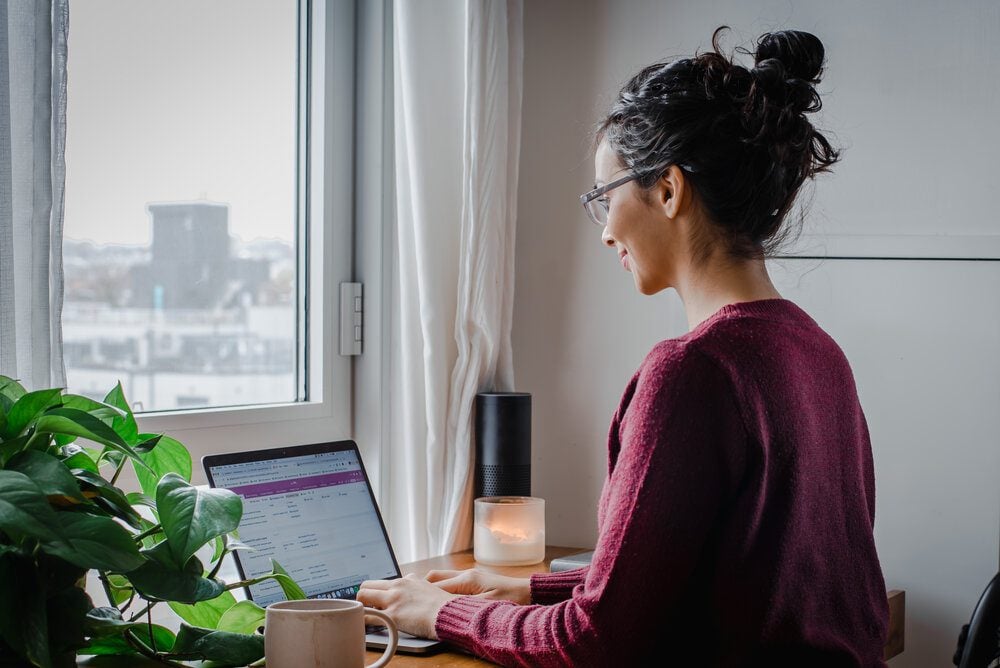
It’s also essential that you communicate these designated work and play spaces to everyone in your household, especially young children who might not ordinarily understand the difference between a desk and a dining table. For instance, “when mommy is at this work desk, she is working and shouldn’t be interrupted unless it’s really important. But if mommy is at this dining table three feet away, she is all ears and it’s time to play!”
Even if it’s not feasible to make some spaces exclusive to work, you can make certain spaces exclusive to work during certain hours of the day.
For instance, my partner and I share a ~800 square foot one-bedroom apartment. He has a desk in our bedroom, and I have a desk in our living room (an open layout that blends into the kitchen). I also use the kitchen and our dining table for my work (i.e., cooking, recipe testing, photography, and videography). We both understand that the living room and kitchen are my reserved work areas during the day. As a result, he does all of his work, including conference and video calls, in our bedroom.
It’s certainly not an ideal arrangement for him, but to make it up to him, he gets free rein over the living room after 5 p.m. If I’m still working at this hour (I almost certainly am), I shift to using his desk in the bedroom so he can watch TV, play video games, video chat with family or friends, etc.
9. Carve out one period of the day to read the news
In addition to our phones being a major distraction to our work flow, the never-ending news cycle is a major distraction. Understandably so. We all want to keep current with the latest health guidelines and updates, and it’s easy to spiral down a negative news rabbit hole.
In order to stay sane as well as productive at work, it’s best to limit yourself to one news update per day instead of periodically reading/watching the news throughout the day.
If once a day doesn’t seem adequate for you, keep in mind that the once-a-day update doesn’t have to be just one news article; in fact, you can spend an hour or more reading/watching the news, if you want. Just confine your news-consumption to one continuous period and don’t check the news during any other times of the day.
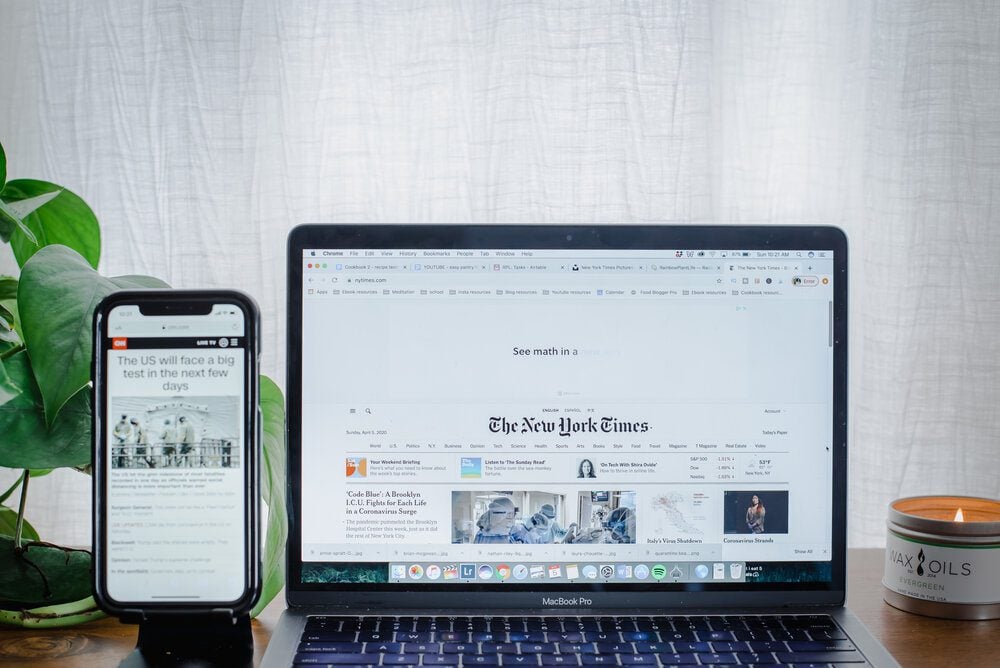
Tip #4 comes into play here, so if you currently have phone notifications for news services turned on, turn them off. Then, when it’s your designated time to check the news (I usually do this during my lunch break or at the end of my workday), you can be intentional and mindful about it. Acknowledge that you are going to read/watch the news during this period, and that, yes, it might get quite depressing and stressful. When you’ve had your news fill for the day, tell your brain that you’re done with the news and try to move on with your day.
10. Do what you need to get work done…be kind to yourself
These are unusual times, so you might need to resort to some unusual methods in order to get your work done. I have a friend who has two energetic young children and when she needs to get work done in silence, she literally locks her bedroom door. Her husband tends to the kids’ needs during this time, and they switch off in this manner throughout the day.
Or, if you live with your partner and you find that you keep distracting one another, institute a few “silent periods” throughout the day. No talking to one another from 9:30 to 11 am, or from 2 to 3 pm. It sounds cruel, but after the first day or two, you’ll both realize it’s for the best, for both of you.
But, and this is the most important part…while you’re trying to get work done and and trying to stay productive, remember to also be kind to yourself.
Remember that these are extraordinarily stressful and unprecedented times, and that it’s perfectly fine if you have a day or two per week where you’re just not very productive. If you need to take a meditation break or exercise break or nap break or eat-an-entire-pint-of-ice-cream-break at 12 p.m., give yourself the space and time do that. And try to not feel guilty about it.
If your kids are screaming or goofing off during Zoom conference call, try not to sweat it. If your coworkers/boss are human, they’ll understand that is just the new normal.
I hope you found these tips for working from home to be useful! If you have a tip of your own, please drop it in the comments below!




Happy new year 2023.
All of the productivity and staying organized tips above are so apt and very much relevant into the post pandemic era of hybrid schedule and even for those working onsite but have to be oncall from home.
You are a one stop shop – great food recipes, staying productive and living a balanced life.
What I got from months of YouTube watching and soul searching over the years is aptly summed up above.
It’s time you please give all of us “I have a dream speech” anchoring with your values and life philosophy. God bless.
Happy new year, Ragha! We hope you have a lovely year. We’re happy to add value to your life!
Very true.
I found these tips to be extremely helpful!! Thank you! Some of them I already have in place as I’ve now been working remote for over 2 months but am excited to try out the pomodoro method and today decided to leave my phone in the kitchen for at least the morning…also totally agree about the news! So important to stay informed but creating boundaries around news consumption is just as important or more so…I also find planners super helpful. I use the passion planner monthly and daily. I’m old school and like pen to paper. I don’t think I’d be able to survive without my planners haha. Again thanks for the insight!
Wonderful article. I’m looking forward to buying the full focus planner!
Super helpful! I just started working remotely and officially set up my desk. These are great tips to get me started being productive! Thank you!
Great article! Thanks for sharing. I look forward to incorporating your techniques into my daily schedule.